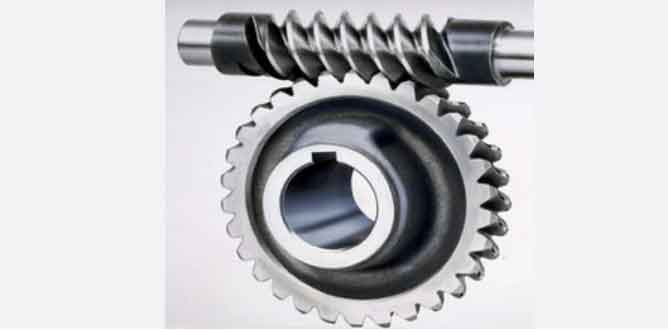Worm gears play a critical role in certain automotive transmissions, especially in manual transmissions and power steering systems. Here is a comprehensive study of the role of worm gears in automotive applications:

1. Manual Transmissions:
Worm gears are commonly used in manual transmissions, particularly for reverse gear engagement. In a manual transmission, the driver selects gears manually using a gearshift lever. To achieve the reverse gear position, a worm gear and a companion gear are utilized. The helical threads of the worm gear enable a smooth and controlled motion for shifting into reverse.
2. Power Steering Systems:
Worm gears are also employed in power steering systems, where they assist in turning the vehicle’s wheels with minimal effort from the driver. In power steering systems, a worm gear and a recirculating ball nut mechanism are used to convert the rotational motion of the steering wheel into the lateral movement of the tie rods, which steer the wheels. The high gear ratio of worm gears in power steering systems allows for effective torque multiplication, making steering easier for the driver.
3. Steering Column Lock Mechanism:
Some vehicles use a worm gear-based steering column lock mechanism to enhance security. When the vehicle is turned off and the key is removed from the ignition, the steering column locks, preventing the steering wheel from moving freely. This mechanism relies on a worm gear design to achieve a stable and secure lock position.
4. Window Regulators:
In certain vehicles, worm gears are used in power window regulators. The worm gear’s high gear ratio enables smooth and precise control of the window movement, allowing for easy operation of power windows.
5. Sunroof Mechanisms:
Worm gears are also employed in sunroof mechanisms to provide controlled and precise motion for opening and closing the sunroof panel.
6. Headlight Leveling Systems:
In vehicles equipped with adaptive or automatic headlight leveling systems, worm gears are used to adjust the headlight beam angle based on vehicle load and pitch changes. This ensures that the headlights maintain an optimal illumination level without causing glare to other drivers.
7. Seat Adjustments:
Worm gears can be found in power seat adjustment systems, allowing for smooth and controlled movement of the seats to achieve the desired position.
8. HVAC Damper Controls:
Some automotive HVAC systems use worm gears to control the movement of air distribution dampers, directing airflow to different vents in the vehicle cabin.
It is important to note that while worm gears offer advantages in specific automotive applications, they may not be suitable for all transmission requirements. In many automotive transmissions, other gear systems such as helical gears, spur gears, or planetary gears are used to meet specific performance and efficiency requirements. Each gear system has its strengths and weaknesses, and automotive engineers carefully select the most appropriate gear type based on factors like gear ratios, efficiency, size, noise, and load-carrying capacity.
